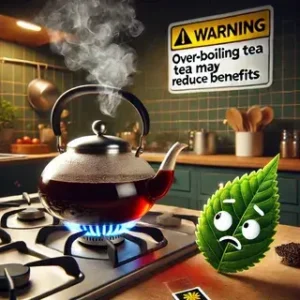I thought I had found something valuable when I first learned about Arabic coffee and Peruvian hard beans. I’ve made and tasted coffee from all around the world as a coffee lover, but these high-altitude Peruvian beans have a particular quality all their own. Based on my study and personal experience, I’ll cover all you need to know about these beans in this book, from their history to brewing advice.
When you think of coffee, Peru might not immediately spring to mind, yet it is one of the world’s best-kept secrets for premium Arabica beans. The exquisite citrous flavors and smooth, nutty finish of Peruvian hard beans enchanted me from the moment I tried them. I’ll cover everything you need to know about these beans in this post, including my own experience and their distinct flavor profile and brewing advice.
What is Coffee Arabica Peru Hard Beans?
Approximately 60% of the coffee produced worldwide is Arabica, one of the most widely grown types. “Hard beans” are coffee beans that are grown at high elevations, typically exceeding 1,200 meters (3,900 feet). Cooler temperatures cause these beans to develop more slowly, producing denser beans with a more complex flavor.
Hard bean cultivation thrives in Peru’s coffee-growing regions, including Amazonas, Cajamarca, and Chanchamayo. These beans stand out in the specialty coffee market because of their flowery, citrusy, and nutty aromas, which are a result of the nation’s distinct microclimates.
Special Features of Hard Coffee Arabica Peru Beans
The aroma of chocolate and citrus fills the room as I brew these beans. It has a smooth and satisfying aftertaste because to its modest body and well-balanced acidity. Every cup appears to be an examination of Peru’s wealth of natural resources. The beans’ mild but lively acidity makes them perfect for pour-over or French press methods.
How Arabica Peruvian Coffee Hard Beans Vary from Other Beans
Peruvian hard beans are distinct because they grow at higher altitudes, leading to denser beans with more complex flavors. Compared to Colombian beans, which tend to be sweeter, and Ethiopian beans, known for their floral intensity, Peruvian beans offer a harmonious balance of acidity and body.
Here’s a quick comparison:
| Bean Type | Elevation | Flavor Notes | Density |
|---|---|---|---|
| Peru Hard Beans | 1,200m+ | Citrus, floral, nutty | High |
| Colombian Beans | 1,200-1,800m | Fruity, caramel | Medium-High |
| Ethiopian Coffee | 1,800m+ | Bright, floral | High |
The Coffee-Growing Regions of Peru: Elevation and Climate Impact
Because of its varied topography, Peru offers a wide range of coffee profiles. Cajamarca has nutty flavors with caramel overtones, whereas Chanchamayo, in the central highlands, produces beans with flowery and citrus notes. The sharp acidity of the beans from the Amazon region is why I particularly adore them.
How to Brew Coffee Arabica Peru Hard Beans for the Best Taste
To get the best flavors, I’ve tried a variety of brewing methods throughout the years. This is my tried-and-true recipe for the ideal cup:
| Brew Method | Grind Size | Water Temp | Brew Time |
|---|---|---|---|
| French Press | Coarse | 90-96°C | 4-5 minutes |
| Pour-over | Medium | 92-95°C | 3-4 minutes |
Because it retains the subtle flavors of the beans, I always use filtered water. The freshest cup possible is ensured by grinding right before brewing.
Is Peru Coffee Arabica?
Yes! Arabica coffee is the most famous crop grown in Peru. Actually, Arabica coffee, which is grown at high elevations in the Andes Mountains, makes up nearly all of the nation’s coffee production. Arabica beans, in contrast to Robusta, are valued for their nuanced flavors and gentle acidity, which is precisely what makes Peruvian coffee so delightful.
What is a Peru Coffee Bean Profile?
The flavor profile of Peruvian coffee is varied. You may experience citrusy aromas, floral undertones, or a nutty finish, depending on the area. The beans from the Cajamarca region, which have a smooth, medium body and a tinge of caramel, are my personal favorites. It is perfect for pour-over brewing because of its well-balanced acidity.
Peru’s coffee tends to have:
- Acidity: Bright but balanced acidity
- Body: smooth to medium
- Aroma: Fragrant with a hint of sweetness
- Flavor Notes: Undertones of chocolate, almonds, and citrus
What is the Specialty Coffee of Peru?
High-altitude, organic coffee beans that are frequently cultivated on small farms using traditional methods are part of Peru’s specialty coffee. Coffee from Peru is renowned for being Fair Trade and certified organic. I’ve discovered that these certifications produce beans with purer, more sophisticated flavors in addition to promoting sustainable farming.
What are the Three Types of Coffee Beans?
There are three main types of coffee beans in the world:
- Arabica – Typically, Peruvian coffee is smooth and flavorful.
- Robusta – a bitter, strong coffee that’s frequently used in instant coffee.
- Liberia –A rare fruity smoky flavor.
| Bean Type | Caffeine Content | Flavor Profile | Region |
|---|---|---|---|
| Arabica | Low to Medium | Citrus, floral, sweet | Peru, Ethiopia |
| Robusta | High | Bitter, earthy | Vietnam, Brazil |
| Liberica | Low to Medium | Smoky, fruity | Philippines |
How to Brew Coffee Arabica Peru Hard Beans for the Best Taste
In my experience, The French press or pour-over method are the ideal ways to consume these beans. These brewing methods bring forth the entire range of flavors, highlighting the nutty undertones and citric brightness. This is the guide I would suggest:
| Brew Method | Grind Size | Water Temp | Brew Time |
|---|---|---|---|
| French Press | Coarse | 90-96°C | 4-5 minutes |
| Pour-over | Medium | 92-95°C | 3-4 minutes |
My Personal Experience with Peru Hard Beans
The first time I brewed Peruvian hard beansThe rich complexity of the flavors left me fascinated. The cup consisted of rich floral notes and nutty undertones that made the drink incredible, so much so that I found myself repeatedly taking sips. I have since made it one of my favorite picks to kick-start the day.
Conclusion
It is literally one of the most challenging and beloved coffees to make. Regardless of one’s level of expertise or inexperience with gourmet coffee, these beans are worth every coffee lover’s attention. Therefore, don’t hesitate, to create the drink, and make sure that every drop tastes like Peru.
What is Arabica Coffee Called?
Arabica coffee is also known as Coffea Arabica and is characterized by a mellow and sweet flavor with undertones of fruit, flower, and nut. The name is sometimes Arabian coffee due to its origins on the Arabian Peninsula. All over the world, arabica beans are the most loved and consumed coffee accounting for almost 60 to 70% of the total coffee output. Due to delicious flavored coffee which has less bitterness than Robusta beans, it is sometimes referred to as premium or specialty coffee in certain markets.
Which Country is No. 1 in Coffee?
With over 37% of the world’s coffee production, Brazil is the biggest producer in the world. In areas like Minas Gerais and São Paulo, it has extensive plantations and controls the Arabica and Robusta coffee markets. Brazilian coffee is very well-liked by roasters and consumers worldwide because of its smooth body and nutty, chocolaty flavors.
What is the Highest Quality Coffee?
It is common knowledge that specialty Arabica beans are the best coffee beans available. Out of these beans, Jamaican Blue Mountain and Civet Coffee or Kopi Luwak are quite sought after for their unique tastes and scarcity. Best coffees are grown at a high altitude and are usually organic and processed with extra care so that the flavors are well intact. As well, Peruvian Arabica also belongs to the highest quality ranks because of its cost quality, fair trade & organic certifications, light acidity, medium body & rather equal proportions of fruit and chocolate accents.
Why is Arabica Coffee Expensive?
Arabica coffee is more expensive due to several factors:
- Cultivation Conditions – It is more difficult to grow because it needs particular conditions and thrives at higher elevations.
- Lower Yield – Arabica plants have a higher risk of developing diseases like coffee leaf rust, which lowers yield.
- Processing Costs –In order to guarantee that only ripe cherries are picked, hand-picking is frequently required, which raises labor expenses.
- Demand for Flavor – Arabica is more valued in the market than Robusta because consumers enjoy its complex flavors.




